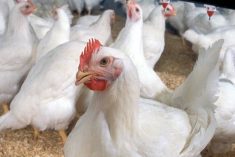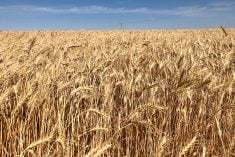PARIS, Dec 9 (Reuters) – Rapeseed production in the European Union is expected to rise to 21.3 million tonnes in 2014/15, up 2.4 percent from 20.8 million this season, as higher yields outweigh a drop in sowings, French-based analyst Strategie Grains said.
The average yield in the next rapeseed crop would reach 3.2 tonnes per hectare against 3.1 tonnes in this year’s harvest, offsetting an expected fall in area to 6.6 million hectares from 6.7 million, the analyst said in a monthly oilseed report.
The rise in EU output would be supported by a rebound in France, where the crop is seen 800,000 tonnes higher at 5.1 million tonnes. The 2013 French crop fell about 20 percent on the year after crops faced poor weather throughout the growth cycle.
Read Also

U.S. grains: Soybean futures inch higher on China trade optimism
U.S. soybean futures firmed on Wednesday as traders remained hopeful for progress in trade talks with top soy buyer China and on a Japanese proposal to increase U.S. soy purchases, deals that could help U.S. farmers avert major losses.
In its first production forecasts for the 2014/15 EU oilseed harvest, Strategie Grains also projected that the sunseed crop in the 28-country bloc would fall 5.7 percent to 8.2 million tonnes from an estimated 8.7 million this season.
Production is notably expected to fall in Bulgaria and Romania after exceptionally good 2013 harvests, it said.
Strategie Grains had estimated last month that the oilseed area in the EU would fall in the next harvest because of a decline in margins for growers, as well as more attractive margins for wheat compared with rapeseed.
Rapeseed in the EU is almost exclusively a winter crop that is sown in late summer. Sunseed is sown in spring so the 2014/15 crop is yet to go into the ground.
For the current 2013/14 season, the supply and demand situation for rapeseed in the EU was tight, in contrast to ample global supply fuelled by a big Canadian crop, the analyst said.
The difference between EU and world prices should widen to encourage more imports into the bloc, it said, adding however that the export pace out of Canada was very slow.














